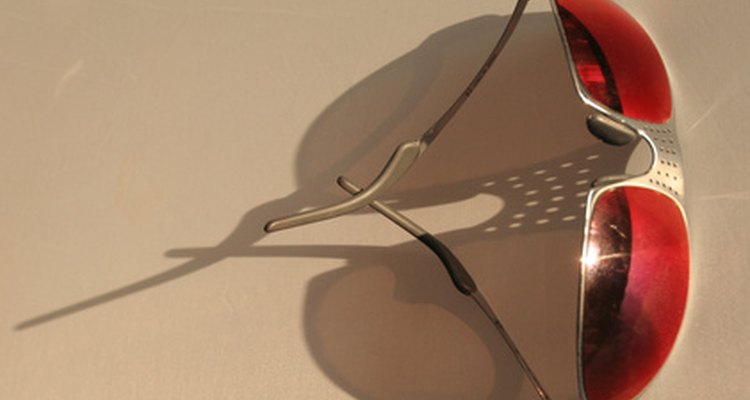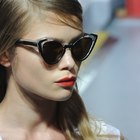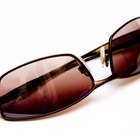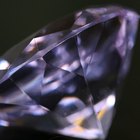
Shopping for sunglasses can be overwhelming, thanks to the innumerable options on the market. Not only do sunglasses come in all shapes, sizes and styles, but they also come in many different lens colors. And unlike style, lens tint will play a key role in how well the sunglasses perform when you wear them. Compounding the issue, similar color shades can vary greatly in terms of performance.
Dark Red Lenses
Actual red lenses like Oakley's red iridium tint are an effective type of lens for blocking out light. These lenses are designed for medium-light or bright days and allow a low percentage of visible light transmission (VLT). Red sunglasses are good if you like the look of red lenses and are looking for something to wear in bright weather, whether it be for sport or casual use. They're typically a step or two down from black lenses in terms of the amount of visible light they block.
Rose Lenses
Rose lenses are quite different from red lenses. Though they appear to be light red or pink, rose lenses are designed to let more light in and are typically best for medium to low light conditions. These lenses are often used for skiing and snowboarding goggles and glasses because they increase contrast with the snow and provide better vision for overcast and stormy days. Unlike red lenses, rose -- sometimes called vermilion -- lenses are not suitable for bright, sunny weather where you'll be exposed to direct sunlight for long periods, because they allow a higher VLT. According to the Vision Council, an eyewear industry association, some people like rose lenses best for comfortable, prolonged wear.
UV Transmission
While the visible light transmission varies depending upon the shade of your red lens, you want a lens that blocks all or close to all of harmful UV light. UV light can damage various parts of the eye, including the cornea and lens, so if you spend significant time under the sun, be sure to get full protection.
Related Articles

Amber Vs. Grey Sunglasses

How Do Yellow Lenses in Ski Goggles ...

Levels of Polarized Sunglasses

Rimless vs. Full Rim Glasses

The Best Photochromic Sunglasses

The Benefits of Yellow Lenses in ...

The Best Sunglasses for Kayaking

Are Red Plums Good for You?

Polycarbonate Lenses Vs. Polarized

How to Spot Fake Serengeti Sunglasses

Tanning Beds and Eye Disorders

How to Clean Maui Jim Sunglasses

How to Fix Transition Lenses

Do People With Blue Eyes Need to Wear ...

How Do Tanning Beds Affect Eyes?

How to Tell If a Blue Diamond Is Real?

How to Repair Scratches in Polarized ...

How to Clean Progressive Lenses

The Difference Between Polycarbonate & ...

How to Make Glowing Ice Cubes From ...
References
Writer Bio
Joe Fletcher has been a writer since 2002, starting his career in politics and legislation. He has written travel and outdoor recreation articles for a variety of print and online publications, including "Rocky Mountain Magazine" and "Bomb Snow." He received a Bachelor of Arts in political science from Rutgers College.
Photo Credits
sonnenbrille image by Alta.C from Fotolia.com